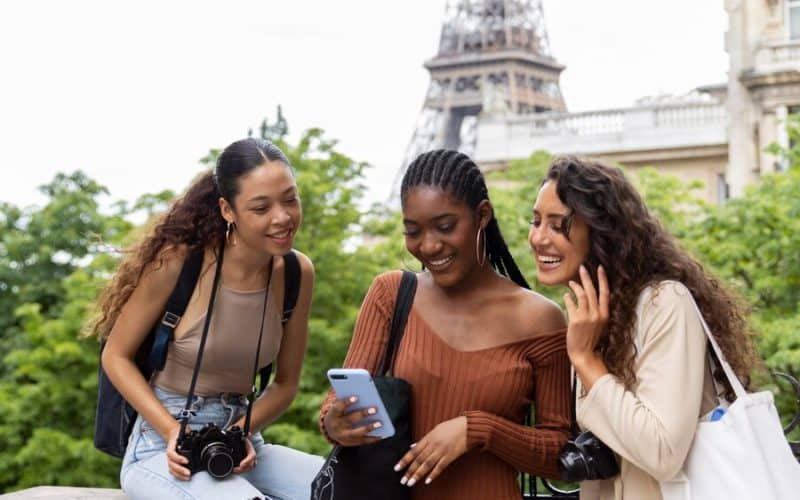Travel and tourism public relations play a key role in helping your company remain visible in its field. Without proper PR, most people won’t even know who your brand is or what it does. Have you ever wondered why that beautiful new resort suddenly pops up on all your social media feeds, or how that quaint town became the next “must-visit” destination in a particular country? Public Relations might be the secret sauce behind the scenes!
In this post, I will share with you what this entails and how it can transform destinations into booming tourist hubs. I’ll explore the shade of travel and tourism public relations and its profound impact on the industry from my experiences to expert tips and strategies.
Key Points
- Tourism public relations (PR) is essential for making a destination visible and attractive to potential tourists. Effective PR strategies can transform unknown locations into popular tourist destinations by crafting compelling narratives and fostering positive perceptions among stakeholders.
- One of the critical roles of tourism PR is managing crises such as natural disasters or political unrest. By providing accurate information and showcasing recovery efforts, PR can help mitigate the negative impact on tourism and restore visitor confidence, as evidenced by the proactive response to a hurricane affecting a popular island destination.
- Building strong relationships with journalists and media outlets is crucial for securing positive coverage and boosting a destination’s visibility. Additionally, partnering with influencers can significantly amplify reach, particularly among younger, tech-savvy travelers who respond well to authentic and engaging content.
- Effective tourism PR strategies include establishing a robust social media presence, focusing on mobile-friendly content, creating high-quality video content, organizing events, and leveraging VR technology.
What is Tourism Public Relations?
Tourism Public Relations (PR) involves managing communication between a tourism organization and its various stakeholders, including tourists, local communities, media, and investors. The goal is to create a positive image and build strong relationships that enhance the reputation and appeal of a destination.
In simple terms, it’s all about storytelling. By crafting compelling narratives, PR professionals can highlight the unique features, attractions, and experiences a destination can offer. This storytelling isn’t just about attracting tourists; it’s also about fostering goodwill and positive perceptions among local communities and stakeholders.
Importance of Public Relations in Travel and Tourism
The significance of Public Relations in travel and tourism cannot be overstated. According to the World Travel & Tourism Council, travel and tourism generated $8.8 trillion in 2023, supporting 319 million jobs worldwide. Effective PR can significantly boost these numbers by attracting more visitors and fostering a thriving tourism sector.
#1. Building a Positive Image
In my years working with various travel and tourism boards, I’ve seen how a well-crafted PR strategy can turn a relatively unknown location into a bobbling tourist destination. For instance, when I collaborated with the tourism board of a small coastal town, we focused on promoting its pristine beaches and vibrant local culture through targeted media campaigns. This resulted in a 30% increase in tourist arrivals within a year.
#2. Crisis Management
Travel and Tourism Public Relations is also crucial in managing crises. Natural disasters, political unrest, or negative media coverage can severely impact tourism. Effective PR strategies can help mitigate these effects by providing accurate information, reassuring potential visitors, and showcasing the resilience and recovery efforts of the destination.
I recall an incident where a popular island destination faced a severe hurricane. Our team quickly mobilized to communicate the safety measures and recovery plans in place. We partnered with local media to share positive stories of recovery and resilience. This proactive approach helped restore tourist confidence, and within a few months, visitor numbers began to climb again, it was a massive win for us.
The Role of Public Relations in the Tourism Industry
Public relations in travel and tourism plays multiple roles, from media relations and influencer partnerships to community engagement and brand management. Each aspect is vital in creating a cohesive and compelling narrative that attracts tourists and builds long-term loyalty.
#1. Media Relations
Building strong relationships with journalists and media outlets is a cornerstone of tourism PR. Positive media coverage can significantly boost a destination’s visibility and credibility. For example, when we organized a press trip for journalists to experience a new eco-resort, the resulting coverage in major travel magazines and blogs generated widespread interest and bookings.
#2. Influencer Partnerships
Working with influencers can amplify a destination’s reach, especially among younger, tech-savvy travelers. I’ve had the pleasure of working with influencers who have a thing for capturing the essence of a place. Their authentic, engaging content often resonates more with audiences than traditional advertising.
#3. Community Engagement
Engaging local communities is essential for sustainable tourism development. PR efforts should include initiatives that benefit residents and foster positive relationships between tourists and locals. During a project in Southeast Nigeria, we launched a campaign highlighting local artisans and cultural experiences. This enriched the tourists’ experience, supporting the local economy and preserving cultural heritage.
Download Lamphill’s Template Here
Tips and Tricks for Creating Unique Public Relations Strategies to Boost Tourism
Tourism and travel are slightly different industries from others (but with lots of opportunities). The following tips are generally useful, but you can find some that are particularly effective in your field. To win in this highly competitive market, consider certain actions that can help you leverage your company objectives.
#1. Establish a good social media strategy.
It may not surprise you, but you should pay special attention to your social media strategy. The Internet has become the most common way for travelers to schedule their trips; more than ever before, travelers are online and mobile-savvy.
83% of US citizens now prefer to book their trips online. From general data, reviews, and thrilling photos of resorts and hotels – every aspect counts in encouraging customers to buy. Experiment with various strategies to determine what works best for you. Be innovative, gather data, observe what others do, and create a plan that best fits your business model.
#2. Bet on local, individualized messages
You cannot be everywhere at the same time. So, focus on specific places and people instead of trying to market your company worldwide.
A personal touch can go a long way, especially when raising brand awareness among travelers. Keep in mind that word-of-mouth marketing is widely used in the tourism business. Understand your target audience, and the consumer must clearly understand how to craft a message to persuade them.
#3. Partner with important travelers and influencers
Explore influencers and brands related to the demographic you’re targeting, and determine how you could partner with and receive exposure through them. Many influencers are expressly associated with the tourism industry (ranging from nano to top).
Most of them work on Instagram, but they frequently extend their activity to other platforms as well. Bringing in partners to assist with your tourist promotion can be an excellent move. But, before you begin, make sure you approach the ideal person who will drive traffic and raise brand recognition.
#4. Focus on mobile devices
70% of travelers use smartphones to research their vacations. Even if you’re used to targeting desktop customers, it’s a good idea to build two versions of your site, one specifically optimized for the small screen. Having a mobile version of your website can help you stay ahead of the competition and ensure that users find everything they need on the go.
#5. Create video content
Videos are an excellent way to capture consumers’ attention and let them imagine what it’s like to vacation on the beach, ski in fresh powder, or cruise through Norwegian fjords.
Engaging in unique content can enhance all aspects of public relations. Make a video with the highest quality equipment you have available. It doesn’t have to be professional-quality editing or animation, but it should look excellent.
The video’s production value has a significant impact on the return on investment it will provide for you, simply because viewers are significantly more likely to engage with your work if it appears engaging.
#6. Participate in and organize events
Public relations events allow you to showcase your company’s offerings and services to the general public. Organizing and participating in public relations events allows you to project a positive image of your firm while emphasizing its social benefits.
Participate in third-party-organized events, such as fairs and exhibitions, to gain valuable opportunities to reach customers directly and gain lasting business relationships. Promoting your brand at major travel events is an excellent approach to increase visibility for your firm. You can also look up virtual events for this reason.
#7. Look to the future of VR technology
VR technology development has the potential to transform the tourism industry (and is currently doing so). As more companies start using VR as a sales tool, such experiences have become an integral part of marketing strategies for businesses in the travel and tourism industry, ranging from hotels to airlines.
Companies must provide specialized products and services to their clients, such as designing custom virtual reality apps for mobile devices to unique virtual tours. The technology, for example, can be used to depict hotel interiors or to show guests what to expect at a certain location on the spot.
It’s a terrific opportunity to present 360-degree imagery of a destination with excellent resolution, allowing customers to imagine themselves there at the destination.
#8. Interact with prospects and customers
PR is not only about events and managing the overall image of your company. You cannot overlook one of the most important factors: your audience. It is not enough to provide them with compelling information and experiences.
To maintain a positive online image, you must engage with your audience. Respond to the reviews (positive and negative), and remember to answer all of your prospects’ queries. This allows you to provide a great customer experience while also retaining loyal customers.
#9. Monitor social media mentions of your brand
I understand that it is difficult to track all mentions and respond as promptly as possible. If it’s too much for you and you want to make your job easier, consider using a social monitoring tool instead.
It’s a system that will notify you whenever your brand is mentioned and automatically detects the sentiment of the mentions. It also offers ready-made reports with valuable data that can be generated in a matter of a minute. Such real-time tracking helps you manage your online presence and the whole PR campaign more effectively.
Download Lamphill’s Template Here
#10. Measure the results of your efforts
What happens if you’re running a public relations campaign for your travel firm and suddenly observe a drop in conversion rates? Or that there was no improvement whatsoever?
Before making any changes, it is essential to assess the effectiveness of your efforts. Otherwise, you risk losing a lot of money unintentionally. Having metrics in place is essential to understanding whether you’re doing a good job and what needs to be done.
You should set up metrics to track your progress. It can be as easy as generating a spreadsheet and adding columns like:
- Type of PR (for example, press release, blog article)
- Metrics (e.g. sales leads)
- Result (was there any improvement?)
You can then dig further into the data to help you identify the action items that need to be tackled. Finally, it allows you to determine whether your PR effort was successful and if there are any areas for improvement.
Best Tourism Public Relations Agencies
Let’s face it, crafting a killer PR strategy can be time-consuming. Here are a few highly-regarded travel and tourism Public Relations agencies that can help you tell your story to the world:
How to Do Tourism Public Relations Right: A Pro’s Tips
Here are some golden tips I’ve learned from my own experience in the tourism industry:
- Build Strong Media Relationships: Build relationships with journalists and media outlets by regularly sharing newsworthy stories and updates. Offer exclusive access or behind-the-scenes experiences to create engaging content.
- Focus on Authenticity: Authenticity is key in today’s digital age. Ensure that your PR efforts reflect the true essence of the destination. Authentic stories and experiences resonate more with audiences and build long-term trust.
- Engage Locals: Involve local communities in your PR campaigns. Highlight their stories, traditions, and contributions to create a richer, more relatable narrative. This not only enhances the tourist experience but also fosters community support.
- Measure Success: Set clear goals and KPIs for your PR activities. Use analytics tools to measure the impact of your campaigns and adjust strategies as needed. Success isn’t just about increased tourist numbers but also improved perception and engagement.
- Stay Adaptive: The tourism industry is dynamic, with trends and preferences changing rapidly. Stay updated with industry trends and be ready to pivot your PR strategies to align with new developments and opportunities.
What are the 7 Ps in tourism?
The 7 Ps of tourism marketing are a framework used to develop and analyze marketing strategies for tourism destinations, businesses, and attractions. By considering all 7 Ps, tourism businesses can develop a comprehensive marketing strategy that caters to the needs and desires of potential tourists. Here’s a breakdown of the 7 Ps:
- Product
- Price
- Place
- Promotion
- People
- Processes.
- Physical Evidence
What are the 4Ps of travel tourism?
The 4Ps of travel and tourism is a simplified framework used for marketing travel products and destinations. It’s similar to the marketing mix used in other industries but with a focus on the specific elements that influence travel decisions. Here’s a breakdown of the 4 Ps:
- Product
- Price
- Place
- Promotion
What are the PR tools in the tourism industry?
Here’s an in-depth look at some essential PR tools that can significantly boost your tourism PR efforts:
- Media Monitoring Tools: Example tools such as Meltwater, Cision, and Mention.
- Press Release Distribution Services: Example tools such as PR Newswire, Business Wire, and GlobeNewswire.
- Media Database Platforms: Example tools such as Muck Rack, Cision Media Database, and Agility PR Solutions.
- Social Media Management tools: Example tools such as Hootsuite, Buffer, and Sprout Social.
- Content Creation and Management tools: Example tools such as Canva, Adobe Creative Cloud, and WordPress.
- Email Marketing Platforms: Example tools such as Mailchimp, Constant Contact, and Sendinblue.
- Influencer Collaboration Platforms: Example tools such as AspireIQ, Traackr, Upfluence.
- Analytics and Reporting Tools: Example tools such as Google Analytics, SEMrush, Moz.
- Event Management Software: Example tools such as Eventbrite, Cvent, and Bizzabo.
- Survey and Feedback Tools: Example tools such as SurveyMonkey, Typeform, and Qualtrics.
Conclusion
Public relations in the travel and tourism industry involves more than just creating buzz for your product and increasing your online presence. Instead, PR contributes value that goes beyond the promotion of your company or business.
Public relations is extremely beneficial in the travel sector. It assists businesses in increasing market penetration, raising awareness regarding their products and services, developing loyalty with current and prospective customers, and increasing conversion rates. If you want to launch a great public relations campaign, keep all the tips I’ve provided in mind.
Are you ready to elevate your destination’s appeal through strategic PR? What challenges have you faced in your travel and tourism Public Relations efforts, and how have you overcome them? Share your stories and insights in the comments below!
Related Articles
- Free PR Tools: Top 10 Free PR Gems That Put Paid Tools to Shame
- 13 Digital Storytelling Examples that Will Inspire You
- Top 17 Public Relations Conferences You Shouldn’t Miss in 2024
- What a PR Strategist Really Does: (+ Free Helpful Tips)
- What is PR Measurement: How Experts Prove Effectiveness






